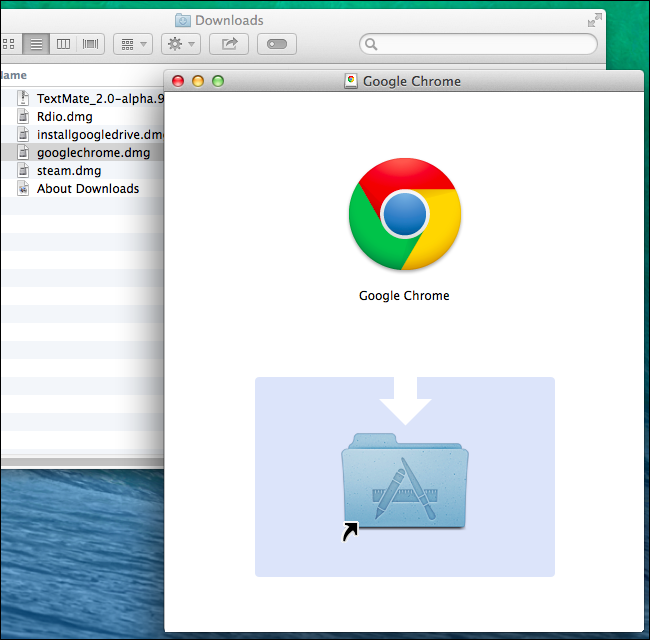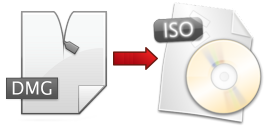Edit A Dmg File Mac
- What Is A Dmg File On Mac
- Dmg File Run
- Edit A Dmg File Mac Quickbooks
- Dmg Extractor
- Edit A Dmg File Mac How To Boot Windows 10
May 01, 2016 I ran into a situation of editing bootable dmg for my need, I utilized the hdiutil shadow mode for my purpose and thought share best possible way to edit read only dmg with community. What is DMG file and what’s the purpose of it? Advantages: Preserve bootable state of dmg; Eliminate a space required to convert read-only dmg to read-write. Method 2: How to Burn DMG to USB in Windows 10 (Bootable) Since Windows doesn't natively support DMG files, you will need to first download and install a utility that can handle such disk images. The best software for the job is WizDMG, a Windows-based desktop solution for authoring Apple's disk image files in a non-Mac environment. DMG file is a compressed file format being used widely on Mac computer. Windows OS doesn't natively support DMG disk image files, so if you need to create a bootable USB drive from a DMG file, mostly for bootable Mac OS X or macOS installation USB, you need a special utility to help you complete the task. UUbyte is a famous software vendor that offers the best in quality products for manipulating ISO and DMG files. You can easily burn, create, edit and copy ISO and DMG archives.
A DMG file is essentially Apple's format for mountable disk images in Mac OS X (macOS) computers. When opened, it mounts a virtual disk on the computer, and is normally used for installing new applications. DMG file is usually encrypted and compressed, unlike ISO, which is an uncompressed disk image format.
While DMG files are usually downloaded from the Mac App Store, they can also be burned to a USB disk when you want to install a utility on another machine. In such cases, you will need to create a boot disk or burn it to a USB flash drive so it can be used on another system. This article shows you four different ways to do this.
Part 1: How to Burn DMG to USB on Mac for Free (Disk Utility)
The native disk image utility on Mac is ideal for burning a DMG to a USB drive. Once you burn the file to the drive, this drive can be used to install the associated application on any other Mac system. The process may vary slightly depending on which version of Mac OS X your computer is running, but the steps below will give you a fair idea of how the process should be carried out.
Step 1: Go to Applications >>Utilities >>Disk Utility and click on it to launch the program.
Step 2 : On the left, you'll see all the available drives. Insert the USB drive and watch as it appears on that list.
Step 3 : Now open a Finder window and locate your DMG file. Drag and drop it under the drive names in the Disk Utility app.
Step 4 : Next, select the file, and then click on 'Burn' in the same window. In the popup that appears, select your destination drive, which is the USB flash drive you want to burn the DMG file to. Click 'Burn' in the popup window.
Once the process is complete, remove the USB stick and use it to install the application associated with that DMG on any other Mac computer.
Part 2: How to Burn DMG to USB (Bootable) via DMG Editor on Mac
UUByte DMG Editor is a versatile application that can help you burn converted DMG files to a USB drive. The interface is very simple, and all you need to do is click a few times and the job is done for you. DMG Editor gives you the option of creating boot disks or boot drives, and is the perfect tool for transporting your DMG files in their ISO avatar. Assuming you have a USB drive with enough capacity, it can hold several programs.
DMG Editor doesn't require any technical expertise because it is specifically designed for new users who may not be comfortable handling disk images. All the hard work is done behind the scenes, and the layout is intuitive enough for any novice to figure out what to do. For first-time users, here's a small guide for using it to get a converted ISO file burned to a USB drive.
Key Features of DMG Editor
- Make USB bootable after burning to USB.
- Able to edit DMG file and recreate it.
- Also support burning to CD or DVD disc.
- Easily extract files from DMG file.
Step 1: Install UUByte DMG Editor
Install DMG Editor after downloading it from the official site. Insert your USB drive into a free port.
Step 2: Insert USB Drive and Import DMG File

Launch DMG Editor and select the 'Burn' option, which will take you to a new window.
Step 3: Start Burning DMG to USB
Select the DMG file and specify the destination, which is your USB drive. Click on Burn. That's it! In a few moments your USB drive containing the converted DMG file will be ready. You can now use this to install the program or programs to another Mac computer after converting them back to the DMG format.
Part 3: Convert DMG to ISO and Burn ISO to USB
In certain instances, you may want to use a Windows computer instead of a Mac, which means you won't have the disk utility. Besides, Windows can't natively handle DMG files, so you will need to convert it into an ISO disk image that Windows can work with. Follow the steps below to do this.
Step 1: Download the DMG file and then convert it to ISO using a free online conversion service like YouConvertIt.
Step 2: Once you do this, you can use another utility like ISO Editor to burn the ISO file to a USB drive.
Remember, even if you convert the DMG to ISO, it's still Mac-compatible only, so you can't use it to install the program on a Windows system. However, it's helpful when your own system is a Windows PC and you want to burn the DMG file to a USB drive. In this case, you will need to convert it back to the DMG format for the installation.
Part 4: How to Burn DMG to USB on Windows 10/8/7 (TransMac)
What Is A Dmg File On Mac
If you're on a Windows PC, another way to burn a DMG file to a USB drive is to use TransMac. This is very useful if your Mac has become unbootable and you only have a Windows alternative. In such cases, you can use TransMac to burn the DMG file for Mac OS X (whatever version you want to install on your broken Mac) to a USB drive and do the installation that way.
To install Mac OS X, you're going to need a USB with at least 16 GB of free space. Also, it's better to take a backup of existing data so you don't lose it during the burn process. Follow the steps below to use TransMac:
Step 1: Download an original copy of TransMac to a Windows PC. The 14-day trial will let you execute the process we're going to describe, so go ahead and install it.
Step 2: Download the DMG file for the version of Mac OS X that you want to install. Now launch TransMac, but make sure to run it as the Administrator. Click on 'Run' once the application is launched, and insert the USB flash drive. Free mp3 downloads for mac.
Step 3: The next step can be a little confusing because, normally, you would select the DMG or ISO file first before selecting the destination drive. Here, it's the other way around. In the main window, right-click on the USB drive in the left-side panel, then select 'Restore with Disk Image'.
Step 4: You'll get a warning popup. Select 'Yes' if you've backed up the contents of the USB drive, or else click 'No', backup the drive and then resume the process at Step 3.
Step 5: This is where you select the disk image, so go ahead and choose your Mac OS X .DMG file and click 'Ok'. The DMG file will now be burned to the drive you specified.
Summary
All of these methods work well, so it's just a matter of preference and convenience, and depends on whether you have a Mac or a Windows PC. On a Mac, Disk Utility may show you some errors when burning a DMG file to a drive. Similarly, when you use a Windows system, converting DMG to ISO could corrupt the file, making it unusable once you convert it back to DMG. That's why we recommended YouConvertIt for that. Based on all these factors, choose the method that will work best for your specific situation.
File type: Mac OS X Disk Image
Dmg File Run
Open DMG File

The usage of the DMG file extension is in the context of a mountable disk image file which is generated by the Mac OS X Operating System platform. Once the file is opened, the system will mount it in a virtual disk located on the user's desktop.
This type of file is normally utilized for the distribution of software installation packages for the Macintosh computer system.
Prior to the introduction of this file format, the Mac environment utilized the IMG up until the introduction of the Mac OS 9. The Apple Disk Utility is the main application associated by users to this particular file type under the Macintosh platform and is bundled with the Mac OS X installation package.
Although not meant to be directly opened under the Microsoft Windows Operating System platform, the DMG format file can be accessed by Windows users by using some third party applications in the market. Basically, the DMG file extension can be compared to the EXE or ISO format of Windows and can even function as a complete virtual drive for the system.
The mimicking of physical CD drives is a workaround implemented by the system to address problems that may arise from CD requirements of some software programs including support for the efficient usage of an organization's resources.